In a multi-part series, Comic Book Film Editor William Gatevackes will be tracing the history of comic book movies from the earliest days of the film serials to today’s big blockbusters and beyond. Along with the history lesson, Bill will be covering some of the most prominent comic book films over the years and why they were so special. This time, as we return from another hiatus, we look at the amazing success of comic book writer Mark Millar on and off the big screen.
 If you were to ask the non-comic book literate to name comic creators that had a great influence on the comic book film, the list you’d get back would be pretty short. Stan Lee would probably be on everybody’s list, as it should be for being the unofficial spokesperson for comic book for decades and for all his ubiquitous cameos in the Marvel films based on the characters he helped to create. Frank Miller might also make the list, being that his early work in comics set the groundwork for the film and TV versions of Daredevil and every film version of Batman to date, not to mention his Sin City series which he co-directed and The Spirit which, sadly, he directed all by himself. The hipsters in the audience might also name Jack Kirby, who co-created most of the Marvel film stars with Lee.
If you were to ask the non-comic book literate to name comic creators that had a great influence on the comic book film, the list you’d get back would be pretty short. Stan Lee would probably be on everybody’s list, as it should be for being the unofficial spokesperson for comic book for decades and for all his ubiquitous cameos in the Marvel films based on the characters he helped to create. Frank Miller might also make the list, being that his early work in comics set the groundwork for the film and TV versions of Daredevil and every film version of Batman to date, not to mention his Sin City series which he co-directed and The Spirit which, sadly, he directed all by himself. The hipsters in the audience might also name Jack Kirby, who co-created most of the Marvel film stars with Lee.
But only the savviest of the savvy would name Mark Millar. Millar shares Lee’s skill at self-promotion, Miller’s ability to deconstruct time-worn concepts and make them feel brand new, and has a writing style as bombabastic and as personally identifiable as Kirby’s art was to him. As for his contribution to the comic book film, well, the entire Marvel Cinematic Universe borrows a lot from his work on Marvel’s Ultimate line (starting with a both having a Nick Fury that looks like Samuel L. Jackson), five films have been made from comic book properties he created and owns, with films for seven other creator owned properties of his in development. And two of the most anticpated films of the next year, Fox’s Fantastic Four reboot and next May’s Captain America: Civil War are based at least in part on Millar’s writing.
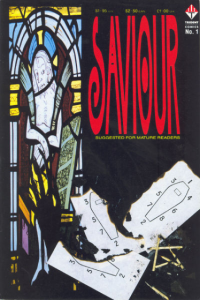 The Scottish Millar got his start in comics writing for companies in his native UK in the late 1980s/early 1990s, most notably 2000 A.D. and Crisis. It was in the latter that his writing partnership with his mentor Grant Morrison began.
The Scottish Millar got his start in comics writing for companies in his native UK in the late 1980s/early 1990s, most notably 2000 A.D. and Crisis. It was in the latter that his writing partnership with his mentor Grant Morrison began.
Like most successful British writers of the day, Millar eventually found work in the United States at DC Comics in 1994. He would once again partner with Morrison, by this time a superstar writer for DC, on the iconic Swamp Thing title. The pair would also work together on runs of The Flash, Aztek: The Ultimate Man and Millar would work on fill-in issues and spin-offs of Morrison’s JLA.
However, outside of his partnership with Morrison, Millar had a hard time finding steady work from DC. He’d get a fill-in here, a 4-issue run there. But outside a lengthy run on DC’s comic adaption of the animated Superman TV show, Millar could not get any steady work. That is, until he was tapped by Warren Ellis to replace him on Wildstorm’s The Authority in 2000.
The Authority was Millar’s coming out party. It’s where his personality as an author blossomed. His stories for the title were thoughtful yet shocking. They were deconstructions of the genre yet still in a way a sick tribute to the conventions as well. They were chock full of sex, hyperviolence bit also political commentary and satire. Any thing he could do to generate controversy was what he would do. It was in your face writing as a form of self promotion, because people will notice you and your writing if you stick it in their face.
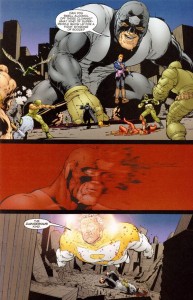 How controversial was it? Well, let’s take a few examples from the arc where the Authority fought a thinly-veiled version of Marvel’s Avengers. Millar had the Captain America stand-in rape any foe he defeated in combat. The Iron Man doppelganger killed a nursery of babies just to kill one child. And the Authority’s Apollo killed the Giant Man pastiche by graphically flying through the person’s skull.
How controversial was it? Well, let’s take a few examples from the arc where the Authority fought a thinly-veiled version of Marvel’s Avengers. Millar had the Captain America stand-in rape any foe he defeated in combat. The Iron Man doppelganger killed a nursery of babies just to kill one child. And the Authority’s Apollo killed the Giant Man pastiche by graphically flying through the person’s skull.
DC Comics, Wildstorm’s parent company, stepped in to censor that panel. And after 9/11, DC stepped in to censor more of his work. When his contract was done with DC, he would not return. His last work for the company would be released after he was gone and would be an example of another one of his writing trademarks: a new take on a time-worn trope. That book would be Superman: Red Son and would feature the hook, “What if Superman’s rocket landed in the Soviet Union instead of the United States?”
Leaving a corporation like DC Comics would have been the death knell for any other writer’s career. It only opened up Millar for bigger and better things. It freed him to join Marvel.
Marvel Comics was undergoing a creative resurgence at the time, and they were looking for writers of Millar’s ilk–people who were daring enough to take their characters in new and interesting directions. Millar joined Brian Michael Bendis in becoming the architects of Marvel’s Ultimate line, a sub-imprint where Marvel’s characters would be reimagined for a whole new generation of readers. Millar was charged with reinventing the X-Men in Ultimate X-Men, the Avengers in The Ultimates, and, with Bendis, the Fantastic Four in Ultimate Fantastic Four.
If his work on The Authority garnered him some attention, then his work on Ultimate Marvel made him a superstar. His bombastic, summer blockbuster style was just enough to give the new imprint the explosive start it needed, and the readers he brought in would follow him to whatever project he did next. He spun his work on the Ultimate titles into high profile, high concept runs on mainstream titles such as Wolverine, Spider-Man and the Fantastic Four. His success allowed him the opportunity to do what few comic book writers could do–start up his own shingle and create concepts that he would own half the rights too (shared 50/50 with the artists on the titles).
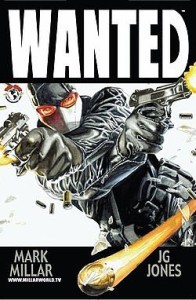 He called this shingle Millarworld and one of his first creator-owned titles was Chosen, later renamed American Jesus. This trilogy started at Dark Horse Comics but later moved to Image Comics. It is the only book of Millar’s that has not been optioned for the screen as of yet, mainly because he hasn’t finished the trilogy. He had a bit more success with his first creator-owned title: a comic he did with J.G. Jones for Top Cow called Wanted.
He called this shingle Millarworld and one of his first creator-owned titles was Chosen, later renamed American Jesus. This trilogy started at Dark Horse Comics but later moved to Image Comics. It is the only book of Millar’s that has not been optioned for the screen as of yet, mainly because he hasn’t finished the trilogy. He had a bit more success with his first creator-owned title: a comic he did with J.G. Jones for Top Cow called Wanted.
The book was Millar’s exploration of a world where the super villains won, killed all the heroes and run the world from the shadows. The story was originally a rejected pitch for DC Comics’ Secret Society of Super-Villains team, which could be seen in the cast, all of which are thinly veiled versions of popular DC Comics villains such as Lex Luthor, the Joker, Catwoman and Bizarro. As with Nick Fury in the Ultimates, Millar insisted Jones draw his main characters to look like the rapper Eminem (lead character Wesley) and Hallie Berry (the Fox).
Rumors would fly later, when the comic book was optioned for a film that Eminem was interested in taking on the role of Wesley. Millar, ever the self-promoter, was more than happy to spread that particular news too. Once the news hit, the rapper was quick to deny the rumors and remove his name from he running. Theories sprung up around the Internet that Millar purposely teased Eminem’s involvement to get the movie made, a claim Millar strongly denies.
Anyway, instead of Slim Shady, we got James McAvoy as Wesley. For what it’s worth, Hallie Berry didn’t sign on either–she was swapped out for another Oscar winner in Angelina Jolie. Oscar winner Morgan Freeman also joined the cast, and Wanted became a reality.
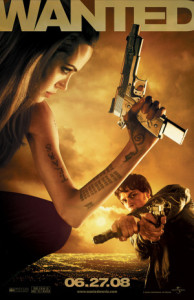 The film jettisoned the superheroes and decided to make Wesley the scion of a superpowered assassin who is called into join The Fraternity, a group of assassins that target evil men and women. Upon joining the group, Wesley’s superhuman’s senses and abilities are awakened, just in time to discover The Fraternity is not what it seems.
The film jettisoned the superheroes and decided to make Wesley the scion of a superpowered assassin who is called into join The Fraternity, a group of assassins that target evil men and women. Upon joining the group, Wesley’s superhuman’s senses and abilities are awakened, just in time to discover The Fraternity is not what it seems.
What is lost by the film no longer being a commentary on comic book villainy is more than made up in Timur Bekmambetov’s inventive direction and the visually stimulating stunts. The film made four times its budget back, and a sequel was put into development. However, even though McAvoy is enthusiastic about returning to the role, the film has been stuck in script development hell.
In 2004, Marvel Comics established a boutique, creator owned imprint named Icon where its most popular writers, Brian Michael Bendis, J. Michael Straczynski and Ed Brubaker could house there creator-owned projects. Millar joined these creators in 2008 with Kick-Ass.
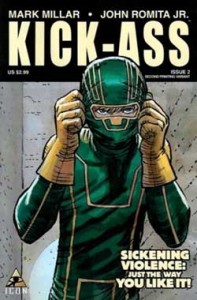 The high concept this time, which Millar co-created with legendary comic book artist John Romita Jr., was a look of what the life of a costumed vigilante would look like in the real world. Dave Lizewski is a comic book loving teenager who becomes compelled by his favorite reading material to become a costumed vigilante in order to fight real life crime. The real world enters the picture as he is savagely beaten and left in traction in the hospital. Fortunately, he meets the father/daughter vigilante team of Big Daddy and Hit-Girl, two costumed vigilantes better trained than Dave. Together, they take work to take down crime boss John Genovese.
The high concept this time, which Millar co-created with legendary comic book artist John Romita Jr., was a look of what the life of a costumed vigilante would look like in the real world. Dave Lizewski is a comic book loving teenager who becomes compelled by his favorite reading material to become a costumed vigilante in order to fight real life crime. The real world enters the picture as he is savagely beaten and left in traction in the hospital. Fortunately, he meets the father/daughter vigilante team of Big Daddy and Hit-Girl, two costumed vigilantes better trained than Dave. Together, they take work to take down crime boss John Genovese.
While the book is promised to us as being a realistic take on the superhero, Millar’s over the top sensibilities keep it from being entirely accurate. This is most notable in the character of Big Daddy, who pretends to be a ex-cop who decided to fight crime, but really is a bored accountant who created a more interesting backstory for his new, exciting life and forced his daughter to go along with it.
 It’s film adaptation, Kick-Ass , was released two years later. The film was directed by Matthew Vaughn, the start of a long partnership between the two. It features Aaron Johnson in the lead role, Chloë Grace Moretz as Hit Girl, Nicolas Cage as Big Daddy and Christopher Mintz-Plasse as Red Mist. The synergy between Millar and Vaughn resulted in one of the most faithful adaptations of Millar’s work to date. Small changes were made, but the comic carries most of its plot and a lot of its vulgarity and violence. The film is rated R and it well deserves it. So much so that there was a controversy over pre-teen Moretz acting out such extreme violence and saying such vulgar words.
It’s film adaptation, Kick-Ass , was released two years later. The film was directed by Matthew Vaughn, the start of a long partnership between the two. It features Aaron Johnson in the lead role, Chloë Grace Moretz as Hit Girl, Nicolas Cage as Big Daddy and Christopher Mintz-Plasse as Red Mist. The synergy between Millar and Vaughn resulted in one of the most faithful adaptations of Millar’s work to date. Small changes were made, but the comic carries most of its plot and a lot of its vulgarity and violence. The film is rated R and it well deserves it. So much so that there was a controversy over pre-teen Moretz acting out such extreme violence and saying such vulgar words.
Both the comic book and the film were wildly successful. The comic book spawned two sequels and a spin-off miniseries for Hit-Girl and the film, so far, has spawned one sequel, Kick-Ass 2, released in 2013.
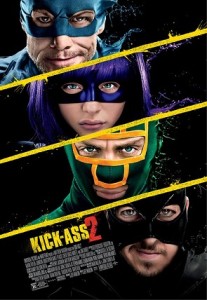 Johnson (now Taylor-Johnson), Moretz and Mintz-Plasse return, this time joined by Jim Carrey. The one person who didn’t return is Vaughn, who stayed on as producer but gave the director’s chair over to Jeff Wadlow.
Johnson (now Taylor-Johnson), Moretz and Mintz-Plasse return, this time joined by Jim Carrey. The one person who didn’t return is Vaughn, who stayed on as producer but gave the director’s chair over to Jeff Wadlow.
The film follows the plot line of the second volume of the comics as Red Mist (Mintz-Plasse) returns for revenge against Dave for the events of the first film. Luckily, Dave still has Hit-Girl to rely on, along with a team of new costume vigilantes he inspired, all led by Colonel Stars and Stripes (Carrey).
There was also a controversy surrounding this one, this time coming from inside the production. Jim Carrey made a statement to the press months before the film was released that he was not going to go on the talk show circuit to promote the film. The shootings at Sandy Hook occurred between filming and the release date, and Carrey did not feel comfortable promoting a film with such violence.
Whether Carrey’s announcement or lack of promotion was the cause, Kick-Ass 2 made only $60.7 million at the worldwide box office, almost $40 million less than its predecessor made worldwide. Regardless, it still made more than twice its budget, which means that there is talk of a sequel. Taylor-Johnson and Moretz expressed interest in returning, but the disappointing grosses make the prospect of a third and final film an uncertain prospect. There has also been talk of a Hit-Girl stand-alone film, but no movement has been made on it as of this writing.
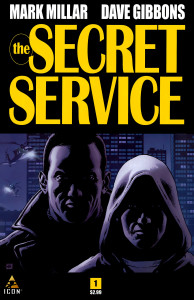 The most recent Millar comic to make the leap to the big screen is 2012’s The Secret Service. The book, co-created with legendary Watchmen artist Dave Gibbons for Icon, is Millar’s take on the James Bond franchise in particular and spy thrillers in general.The book would be Millar’s last for the Icon imprint. He would move over to Image Comics for his creator-owned work.
The most recent Millar comic to make the leap to the big screen is 2012’s The Secret Service. The book, co-created with legendary Watchmen artist Dave Gibbons for Icon, is Millar’s take on the James Bond franchise in particular and spy thrillers in general.The book would be Millar’s last for the Icon imprint. He would move over to Image Comics for his creator-owned work.
The book follows James Bond-like international secret agent Jack London as he investigates a spate of celebrity kidnappings. Along the way, he recruits his nephew into the secret service, helping him get up to speed. Uncle and nephew then join together to stop a plot to instill humanity with a homicidal hatred that would inspire mass killings across the world.
 The comic was made into a film last year called Kingsman: The Secret Service, Millar is once again reunited with Matthew Vaughn, although this time the adaptation wasn’t quite as faithful to the book. The uncle/nephew relationship from the books is gone, as well as the subplot about kidnapping celebrities being changed to kidnapping heads of state.
The comic was made into a film last year called Kingsman: The Secret Service, Millar is once again reunited with Matthew Vaughn, although this time the adaptation wasn’t quite as faithful to the book. The uncle/nephew relationship from the books is gone, as well as the subplot about kidnapping celebrities being changed to kidnapping heads of state.
The film has an outstanding cast, including Colin Firth, Michael Caine and Samuel L. Jackson. The film made over $414 million worldwide, making the film the most successful Millar adaptation to date. Vaughn is already working on the script for a sequel, although he has not committed to direct as of yet.
While Kingsman is the last Millar comic adaptation to hit theaters, it most assuredly won’t be the last Millar comic made into a movie. In addition to all the sequels I mentioned above, almost all of Millar’s creator-owned work is in some stage of development.
Warner Brothers is producing a film based on his Icon book, Nemesis (where Millar answers the question, What if Batman was evil?). Sony has an option on War Heroes, a book Millar did for Image which is his take on Strikeforce: Morituri, a book where soldiers were given drugs that gave them superpowers. 20th Century Fox has the rights to his Starlight (What if a Flash Gordon-like space adveturer got old) and Superior (a twist on the Captain Marvel/Shazam/Captain Marvel Jr. concept which will once again reunite him with Matthew Vaughn).
Universal has an adaptation of Millar’s Chrononauts (waht if Bill and Ted were less stoners and more “bros”) in the pipeline. Studio 8 is producing a film based on his recently released Huck series (which tells the story of a small-town superhero). Director Nacho Vigalando is attached to bring Supercrooks (Oceans 12 done by superpowered criminals) to the big screen. And producer Lorenzo di Bonaventura has partnered with Millar to bring two more of his titles, Jupiter’s Legacy (what if the Justice League had kids) and MPH (the Flash meets Hourman). It’s not that its gotten to the point that Hollywood options Millar’s comics as soon as they’re published, it gotten to the point that they are optioning them while he is still writing them.
Yes, you can argue that Kirby, Lee, and Miller have had a more important impact on today’s comic book film era, but you have to be in awe at Mark Millar’s ability to get his comics into film. His name should be right up there with anyone else’s.
Next time, we’ll be talking about the dark side of the comic book film’s rise in popularity: the comic book carpetbaggers.




